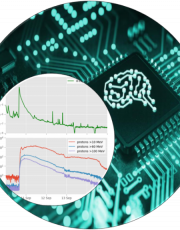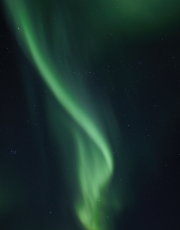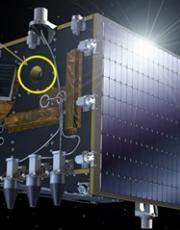Space Physics

Inter-disciplinary approach could further advance the understanding of the mechanisms that generate extreme events.

The modelling of the lunar radiation environment and its effects is an important element for designing and protecting lunar-based assets.

Energetic particles might cause disturbances in electronics on board satellites and are a health concern for astronauts and even aircrew and passengers. Warnings and machine-learning techniques.

Within the BRAIN-Be project MOMA (Multi-wavelength Observations and Modelling of Aurora) we study the UV, visible, and radio emissions of aurora on Earth, through both observations and modelling, to shed some light on the physical processes at play in the formation of aurora.

In-situ measurements revealed that the transmitted signal was not truly circularly polarized as expected and that the beam was not pointing at the zenith but ~10° westwards. The transmitter has been adapted accordingly.

Seven BRAMS receiving stations 2.0 were installed in Limburg in addition of the 3 existing ones with the aim to increase the quality of BRAMS data and to guarantee the long-term activities of the project (retrieve the trajectory of meteoroids).

Solar missions determine the presence of very energetic (suprathermal) particles close to the Sun at the origin of the acceleration of the solar wind.

Comets are thought to contain the best samples of pristine early Solar System materials. However, we were able to show that they age as Galactic Cosmic Rays penetrate.
In the zoo of neutral gases discovered by Rosetta at comet 67P, the group of halogen-containing species grows.

BIRA-IASB is building the electric field sensors for ESA’s Comet Interceptor mission that will visit a fresh comet entering the inner solar system.

The Energetic Particle Telescope provides electron flux measurements at 820 km to determine the strong flux variations.

From the zoo of neutral gases ROSINA discovered at comet 67P/Churyumov-Gerasimenko, a particular type of “animals” remained very elusive: the halogen-containing species.

The Sweeping Langmuir Probe (SLP), developed at BIRA-IASB, is one of the two instruments that will fly on board the ESA CubeSat PICASSO. The main objectives are to get insight into the magnetosphere-ionosphere coupling and aurora.

The Energetic Particle Telescope (EPT) was launched on the ESA satellite PROBA-V on 7 May 2013 to a LEO polar orbit at an altitude of 820 km. The instrument provides what are now 5 years of observations.
Space plasmas are essentially collisionless gases out of thermal equilibrium, where enhanced populations of suprathermal particles are observed.

We have identified a new type of solar radio burst associated with solar flares: ALF bursts. Observations of ALF bursts provide unique information on the early stages of solar flares.

The PECASUS consortium is one of three global space weather service centres. The Space Weather group at BIRA-IASB will be responsible for the coordination of the radiation expert group and for the provision of scientific support to the operators on duty.

Since 2010, BIRA-IASB has developed the BRAMS (Belgian RAdio Meteor Stations) network in order to detect and characterize meteoroids. A more traditional “backscatter” system, an “in-house” meteor radar is currently built at the Geophysical Center in Dourbes.

The atmospheric escape rate for a hypothetical, unmagnetised Earth would be about the same as what it is for the real, magnetized planet where we live.

The 3-dimensional dynamic model of the plasmasphere developed at BIRA-IASB is now provided on the SSA (Space Situational Awareness) website of ESA.
In the context of the THOR space mission proposal, IRAP (Toulouse) and BIRA-IASB designed the fastest and most accurate solar wind measurement apparatus ever.
